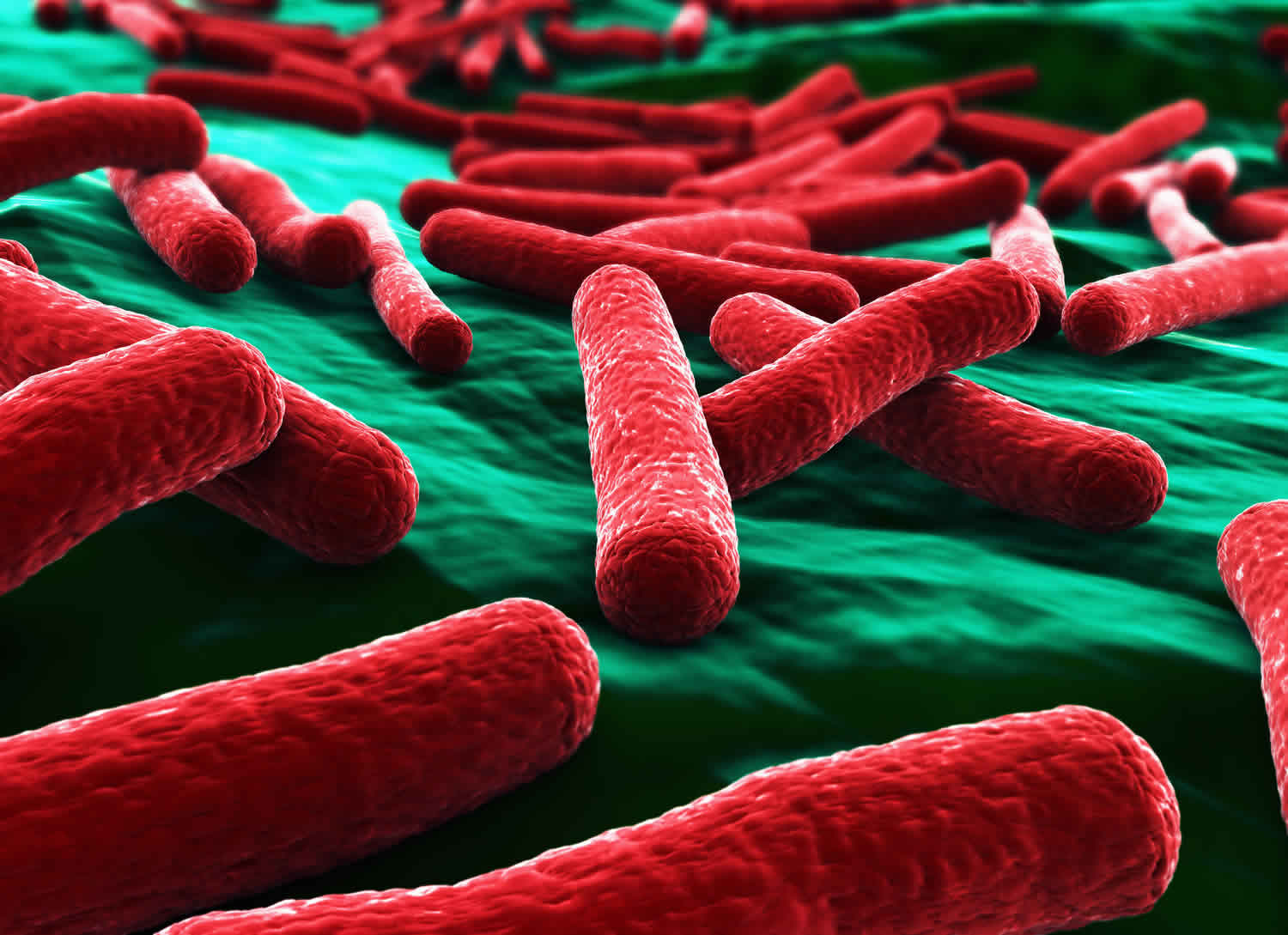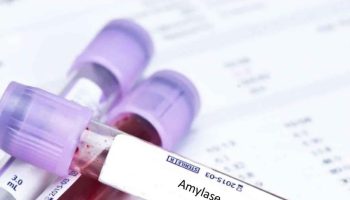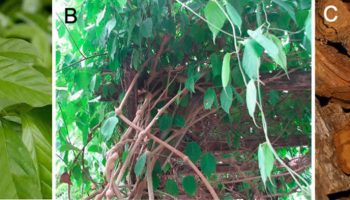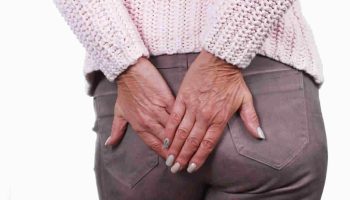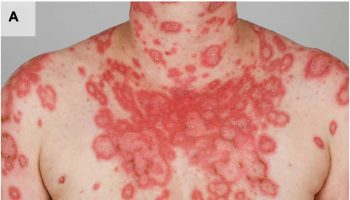What is E. coli infection
E. coli is short for Escherichia coli, which are bacteria found in the environment, foods, and normally live in the intestines of people and animals. E. coli are a large and diverse group of bacteria. Although most strains of E. coli are harmless and actually are an important part of a healthy human intestinal tract. However, some E. coli are pathogenic (can make you sick), meaning they can cause illness, either diarrhea or illness outside of the intestinal tract such as urinary tract infections, blood infections, respiratory illness and pneumonia, and other illnesses. The types of E. coli that can cause illness like diarrhea can be transmitted through contaminated water or food, or through contact with animals or humans feces. Still other kinds of E. coli are used as markers for water contamination—so you might hear about E. coli being found in drinking water, which are not themselves harmful, but indicate the water is contaminated. It does get a bit confusing—even to expert microbiologists.
E. coli consists of a diverse group of bacteria. Pathogenic E. coli strains are categorized into pathotypes. Six pathotypes are associated with diarrhea and collectively are referred to as diarrheagenic E. coli 1.
- Shiga toxin-producing E. coli (STEC): Shiga toxin-producing E. coli (STEC) may also be referred to as Verocytotoxin-producing E. coli (VTEC) or enterohemorrhagic E. coli (EHEC). This pathotype is the one most commonly heard about in the news in association with foodborne outbreaks.
- Enterotoxigenic E. coli (ETEC)
- Enteropathogenic E. coli (EPEC)
- Enteroaggregative E. coli (EAEC)
- Enteroinvasive E. coli (EIEC)
- Diffusely adherent E. coli (DAEC)
Enterotoxigenic E. coli (ETEC) are the most common cause of travelers’ diarrhea and have caused several foodborne outbreaks in the United States. There are an estimated 79,420 cases of enterotoxigenic E. coli (ETEC) in the United States each year 2. Enteropathogenic E. coli (EPEC) and enteroinvasive E. coli (EIEC) primarily infect children in the developing world. Enteroaggregative E. coli (EAEC) probably cause chronic diarrhea in HIV-infected patients. Complications of enterotoxigenic E. coli (ETEC), enteropathogenic E. coli (EPEC), and enteroinvasive E. coli (EIEC) infection are not well described. Enteroaggregative E. coli (EAEC) may cause chronic diarrhea. These E. coli are transmitted through food or water contaminated with human or animal feces. Person-to-person transmission may also occur, but is likely to be less common. International travelers are at greatest risk for enterotoxigenic E. coli (ETEC) infection, while enteropathogenic E. coli (EPEC) and enteroinvasive E. coli (EIEC) are most common among young children in the developing world. Enteroaggregative E. coli (EAEC) are most common among immunocompromised persons.
Shiga toxin-producing E. coli
Some kinds of E. coli cause disease by making a toxin called Shiga toxin. The bacteria that make these toxins are called “Shiga toxin-producing” E. coli, or STEC for short. You might hear these bacteria called verocytotoxic E. coli (VTEC) or enterohemorrhagic E. coli (EHEC); these all refer generally to the same group of bacteria. There are two general types of Shiga toxins, Shiga toxin 1 and Shiga toxin 2. E. coli strains may carry one Shiga toxin or both at the same time. E. coli strains that produce Shiga toxin 2 tend to be more virulent. Even among the more virulent Shiga toxin-producing E. coli (STEC) strains, many infections go undiagnosed.
The strain of Shiga toxin-producing E. coli O104:H4 that caused a large outbreak in Europe in 2011 was frequently referred to as enterohemorrhagic E. coli (EHEC). The most commonly identified Shiga toxin-producing E. coli (STEC) in North America is E. coli O157:H7 (often shortened to E. coli O157 or even just “O157”). When you hear news reports about outbreaks of “E. coli” infections, they are usually talking about E. coli O157. Shiga toxin–producing E. coli (STEC) cause approximately 100,000 illnesses, 3,000 hospitalizations, and 90 deaths annually in the United States, according to the last estimate in 1999 3. Most reported Shiga toxin–producing E. coli (STEC) infections in the United States are caused by E. coli O157:H7, with an estimated 73,000 cases occurring each year 3. Non-O157 STEC bacteria also are important causes of diarrheal illness in the United States; at least 150 Shiga toxin–producing E. coli (STEC) serotypes have been associated with outbreaks and sporadic illness 4. In the United States, six non-O157 serogroups (O26, O45, O103, O111, O121, and O145) account for the majority of reported non-O157 STEC infections 5.
In addition to E. coli O157, many other kinds (called serogroups) of Shiga toxin-producing E. coli (STEC) cause disease. Other E. coli serogroups in the Shiga toxin-producing E. coli (STEC) group, including E. coli O145, are sometimes called “non-O157 STECs.” Currently, there are limited public health surveillance data on the occurrence of non-O157 STECs, including STEC O145; many STEC O145 infections may go undiagnosed or unreported.
Compared with STEC O157 infections, identification of non-O157 STEC infections is more complex. First, clinical laboratories must test stool samples for the presence of Shiga toxins. Then, the positive samples must be sent to public health laboratories to look for non-O157 STEC. Clinical laboratories typically cannot identify non-O157 STEC. Other non-O157 STEC serogroups that often cause illness in people in the United States include O26, O111, and O103. Some types of STEC frequently cause severe disease, including bloody diarrhea and hemolytic uremic syndrome, which is a type of kidney failure.
Who gets Shiga toxin-producing E. coli infection?
People of any age can become infected. Very young children and the elderly are more likely to develop severe illness and hemolytic uremic syndrome than others, but even healthy older children and young adults can become seriously ill.
People with higher chances for foodborne illness are pregnant women, newborns, children, older adults, and those with weakened immune systems, such as people with certain medical conditions (like diabetes or HIV) or undergoing treatment for those conditions.
What are the differences between E. coli O157 and other Shiga toxin-producing E. coli?
Most of what scientists know about Shiga toxin-producing E. coli comes from studies of E. coli O157 infection, which was first identified as a pathogen in 1982. Less is known about the non-O157 STEC, partly because older laboratory practices did not identify non-O157 infections. As a whole, the non-O157 serogroups are less likely to cause severe illness than E. coli O157, though sometimes they can. For example, E. coli O26 produces the same type of toxins that E. coli O157 produces, and causes a similar illness, though it is typically less likely to lead to kidney problems called hemolytic uremic syndrome.
What are symptoms of Shiga toxin-producing E. coli infections?
The symptoms of Shiga toxin-producing E. coli (STEC) infections vary for each person but often include severe stomach cramps, diarrhea (often bloody), and vomiting. If there is fever, it usually is not very high (less than 101˚F/less than 38.5˚C). Most people get better within 5–7 days. Some infections are very mild, but others are severe or even life-threatening.
How soon do symptoms appear after exposure to E. coli bacteria?
The time between ingesting the Shiga toxin-producing E. coli (STEC) bacteria and feeling sick is called the “incubation period.” The incubation period is usually 3-4 days after the exposure, but may be as short as 1 day or as long as 10 days. The symptoms often begin slowly with mild belly pain or non-bloody diarrhea that worsens over several days. Hemolytic uremic syndrome, if it occurs, develops an average 7 days after the first symptoms, when the diarrhea is improving.
What are the complications of Shiga toxin-producing E. coli infections?
About 5–10% of people diagnosed with E. coli O157 infection develop a potentially life-threatening complication known as hemolytic uremic syndrome, a type of kidney failure. Signs that a person is developing hemolytic uremic syndrome include:
- urinating less often
- feeling very tired
- losing pink color in cheeks and inside the lower eyelids
People with hemolytic uremic syndrome should be hospitalized because their kidneys may stop working and they may develop other serious problems. Most people with HUS recover within a few weeks, but some suffer permanent health problems or die.
What is hemolytic uremic syndrome?
Around 5–10% of those who are diagnosed with Shiga toxin-producing E. coli (STEC) infection develop a potentially life-threatening complication known as hemolytic uremic syndrome. Clues that a person is developing hemolytic uremic syndrome include decreased frequency of urination, feeling very tired, and losing pink color in cheeks and inside the lower eyelids. Features of hemolytic uremic syndrome include low platelet count, anemia due to broken blood cells, and kidney failure. Persons with hemolytic uremic syndrome should be hospitalized because their kidneys may stop working and they may develop other serious problems. Most persons with hemolytic uremic syndrome recover within a few weeks, but some suffer permanent damage or die.
Where do Shiga toxin-producing E. coli come from?
Shiga toxin-producing E. coli (STEC) live in the guts of ruminant animals, including cattle, goats, sheep, deer, and elk. The major source for human illnesses is cattle. Shiga toxin-producing E. coli (STEC) that cause human illness generally do not make animals sick. Other kinds of animals, including pigs and birds, sometimes pick up shiga toxin-producing E. coli (STEC) from the environment and may spread it.
How do you get E. coli infection?
Infections start when you swallow Shiga toxin-producing E. coli (STEC) —in other words, when you get tiny (usually invisible) amounts of human or animal feces in your mouth. Unfortunately, this happens more often than people would like to think about. Exposures that result in illness include consumption of contaminated food, consumption of unpasteurized (raw) milk, consumption of water that has not been disinfected, contact with cattle, or contact with the feces of infected people. Some foods are considered to carry such a high risk of infection with E. coli O157 or another germ that health officials recommend that people avoid them completely. These foods include unpasteurized (raw) milk, unpasteurized apple cider, and soft cheeses made from raw milk. Sometimes the contact is pretty obvious (working with cows at a dairy or changing diapers, for example), but sometimes it is not (like eating an undercooked hamburger or a contaminated piece of lettuce). People have gotten infected by swallowing lake water while swimming, touching the environment in petting zoos and other animal exhibits, and by eating food prepared by people who did not wash their hands well after using the toilet. Almost everyone has some risk of infection.
Where did my E. coli infection come from?
Because there are so many possible sources, for most people experts can only guess. If your infection happens to be part of the about 20% of cases that are part of a recognized outbreak, the health department might identify the source.
An estimated 265,000 Shiga toxin-producing E. coli (STEC) infections occur each year in the United States. STEC O157 causes about 36% of these infections, and non-O157 STEC cause the rest. Public health experts rely on estimates rather than actual numbers of infections because not all Shiga toxin-producing E. coli (STEC) infections are diagnosed, for several reasons. Many infected people do not seek medical care; many of those who do seek care do not provide a stool specimen for testing, and many labs do not test for non-O157 STEC. However, this situation is changing as more labs have begun using newer, simpler tests that can help detect non-O157 STEC.
What causes E. coli infection?
Among the many strains of E. coli, only a few trigger diarrhea. One group of E. coli — which includes O157:H7 — produces a powerful toxin that damages the lining of the small intestine, which can cause bloody diarrhea. You develop an E. coli infection when you ingest this strain of bacteria.
Unlike many other disease-causing bacteria, E. coli can cause an infection even if you ingest only small amounts. Because of this, you can be sickened by E. coli from eating a slightly undercooked hamburger or from swallowing a mouthful of contaminated pool water.
Potential sources of exposure include contaminated food or water and person-to-person contact.
Most E. coli infections come from:
- Eating undercooked ground beef (the inside is pink)
- Drinking contaminated (impure) water
- Drinking unpasteurized (raw) milk
- Working with cattle
- Eating food contaminated with animal feces (such as vegetables)
Healthy beef and dairy cattle may carry the E. coli germ in their intestines. The meat can get contaminated with the germ during the slaughtering process. When beef is ground up, the E. coli bacteria get mixed throughout the meat.
The most common way to get this infection is by eating contaminated food. You can be infected with the E. coli bacteria if you don’t use a high temperature to cook your beef, or if you don’t cook it long enough. When you eat undercooked beef, the germs go into your stomach and intestines.
The germ also can be passed from person to person in daycare centers and nursing homes. If you have this infection and don’t wash your hands well with soap after going to the bathroom, you can give the germ to other people when you touch things, especially food.
People who are infected with E. coli are very contagious. Children shouldn’t go to a daycare center until they have 2 negative stool cultures (proof that the infection is gone). Older people in nursing homes should stay in bed until 2 stool cultures are negative.
Contaminated food
The most common way to acquire an E. coli infection is by eating contaminated food, such as:
- Ground beef. When cattle are slaughtered and processed, E. coli bacteria in their intestines can get on the meat. Ground beef combines meat from many different animals, increasing the risk of contamination.
- Unpasteurized milk. E. coli bacteria on a cow’s udder or on milking equipment can get into raw milk.
- Fresh produce. Runoff from cattle farms can contaminate fields where fresh produce is grown. Certain vegetables, such as spinach and lettuce, are particularly vulnerable to this type of contamination.
Contaminated water
Human and animal feces may pollute ground and surface water, including streams, rivers, lakes and water used to irrigate crops. Although public water systems use chlorine, ultraviolet light or ozone to kill E. coli, some outbreaks have been linked to contaminated municipal water supplies.
Private wells are a greater cause for concern because they don’t often have any disinfecting system. Rural water supplies are the most likely to be contaminated. Some people also have been infected after swimming in pools or lakes contaminated with feces.
Personal contact
E. coli bacteria can easily travel from person to person, especially when infected adults and children don’t wash their hands properly. Family members of young children with E. coli infection are especially likely to acquire it themselves. Outbreaks have also occurred among children visiting petting zoos and in animal barns at county fairs.
Risk factors for E. coli infection
E. coli can affect anyone who is exposed to the bacteria. But some people are more likely to develop problems than are others. Risk factors include:
- Age. Young children and older adults are at higher risk of experiencing illness caused by E. coli and more-serious complications from the infection.
- Weakened immune systems. People who have weakened immune systems — from AIDS or drugs to treat cancer or prevent the rejection of organ transplants — are more likely to become ill from ingesting E. coli.
- Eating certain types of food. Riskier foods include undercooked hamburger; unpasteurized milk, apple juice or cider; and soft cheeses made from raw milk.
- Time of year. Though it’s not clear why, the majority of E. coli infections in the U.S. occur from June through September.
- Decreased stomach acid levels. Stomach acid offers some protection against E. coli. If you take medications to reduce your levels of stomach acid, such as esomeprazole (Nexium), pantoprazole (Protonix), lansoprazole (Prevacid) and omeprazole (Prilosec), you may increase your risk of an E. coli infection.
E. coli infection prevention
- WASH YOUR HANDS thoroughly after using the bathroom or changing diapers and before preparing or eating food. WASH YOUR HANDS after contact with animals or their environments (at farms, petting zoos, fairs, even your own backyard).
- Wash your hands thoroughly after using the bathroom and changing diapers.
- Wash your hands thoroughly before and after preparing or eating food.
- Wash your hands thoroughly after contact with animals or their environments (at farms, petting zoos, fairs, even your own backyard).
- Wash your hands thoroughly before preparing and feeding bottles or foods to an infant or toddler, before touching an infant or toddler’s mouth, and before touching pacifiers or other things that go into an infant or toddler’s mouth.
- Keep all objects that enter infants’ and toddlers’ mouths (such as pacifiers and teethers) clean.
- If soap and water are not available, use an alcohol-based hand sanitizer with at least 60% alcohol (check the product label to be sure). These alcohol-based products can quickly reduce the number of germs on hands in some situations, but they are not a substitute for washing with soap and running water.
- People with diarrhea should wash their hands carefully and often, using hot water and soap, and washing for at least 30 seconds. People who work in daycare centers and homes for the elderly should wash their hands often, too.
- COOK meats thoroughly. Ground beef and meat that has been needle-tenderized should be cooked to a temperature of at least 160°F/70˚C. It’s best to use a thermometer, as color is not a very reliable indicator of “doneness.”
- AVOID raw milk, unpasteurized dairy products, and unpasteurized juices (like fresh apple cider).
- AVOID swallowing water when swimming or playing in lakes, ponds, streams, swimming pools, and backyard “kiddie” pools.
- PREVENT cross contamination in food preparation areas by thoroughly washing hands, counters, cutting boards, and utensils after they touch raw meat.
Risky foods
Cook hamburgers until they’re 160 F. Hamburgers should be well-done, with no pink showing anywhere in the meat. But color isn’t a reliable indicator of whether or not meat is done cooking. Meat — especially if grilled — can brown before it’s completely cooked.
- That’s why it’s important to use a meat thermometer to ensure that meat is heated to at least 160 °F (71 °C) at its thickest point.
- Drink pasteurized milk, juice and cider. Any boxed or bottled juice kept at room temperature is likely to be pasteurized, even if the label doesn’t say so.
- Wash raw produce thoroughly. Washing produce won’t necessarily get rid of all E. coli — especially in leafy greens, which provide many spots for the bacteria to attach themselves to. Careful rinsing can remove dirt and reduce the amount of bacteria that may be clinging to the produce.
Avoid cross-contamination
- Wash utensils. Use hot soapy water on knives, countertops and cutting boards before and after they come into contact with fresh produce or raw meat.
- Keep raw foods separate. This includes using separate cutting boards for raw meat and foods, such as vegetables and fruits. Never put cooked hamburgers on the same plate you used for raw patties.
- Wash your hands. Wash your hands after preparing or eating food, using the toilet, or changing diapers. Make sure that children also wash their hands before eating, after using the bathroom and after contact with animals.
E. coli infection symptoms
E. coli is the name of a type of bacteria that lives in your intestines. Most types of E. coli are harmless. However, some types can make you sick and cause diarrhea. One type causes travelers’ diarrhea. The worst type of E. coli causes bloody diarrhea, and can sometimes cause kidney failure and even death. These problems are most likely to occur in children and in adults with weak immune systems.
You can get E. coli infections by eating foods containing the E. coli bacteria. Symptoms can start from 1-10 days after you are exposed to E. coli bacteria.
The first sign is severe abdominal cramps that start suddenly. After a few hours, watery diarrhea starts. The diarrhea causes your body to lose fluids and electrolytes (dehydration). This makes you feel sick and tired. The watery diarrhea lasts for about a day and then may change to bright red bloody stools. The infection makes sores in your intestines, so the stools become bloody. The bloody diarrhea may last for 2 to 5 days. You might have 10 or more bowel movements a day. Some people say their stools are “all blood and no stool.” You may have a mild fever or no fever. You may also have nausea or vomiting. If you have any of these symptoms — watery, bloody diarrhea, cramps, fever, nausea, or vomiting — try to get to your doctor right away.
Symptoms of E. coli infection include:
- Nausea or vomiting
- Severe abdominal cramps
- Watery or very bloody diarrhea
- Fatigue
- Fever
To help avoid food poisoning and prevent infection, handle food safely. Cook meat well, wash fruits and vegetables before eating or cooking them, and avoid unpasteurized milk and juices. You can also get the infection by swallowing water in a swimming pool contaminated with human waste.
Most cases of E. coli infection get better without treatment in 5 to 10 days.
E. coli infection diagnosis
Shiga toxin-producing E. coli (STEC) infections are usually diagnosed through laboratory testing of stool specimens (feces). Identifying the specific strain of Shiga toxin-producing E. coli (STEC) is essential for public health purposes, such as finding outbreaks. Many labs can determine if Shiga toxin-producing E. coli (STEC) are present, and most can identify E. coli O157. Labs that test for the presence of Shiga toxins in stool can detect non-O157 STEC infections. However, for the O group (serogroup) and other characteristics of non-O157 STEC to be identified, Shiga toxin-positive specimens must be sent to a state public health laboratory.
Contact your healthcare provider if you have diarrhea that lasts for more than 3 days, or it is accompanied by high fever, blood in the stool, or so much vomiting that you cannot keep liquids down and you pass very little urine.
E. coli infection treatment
For illness caused by E. coli, no current treatments can cure E. coli infection, relieve symptoms or prevent complications. Most people will be better in 6 to 8 days. Some people — particularly young children and older adults — may develop a life-threatening form of kidney failure called hemolytic uremic syndrome.
Non-specific supportive therapy, including hydration, is important. Antibiotics should not be used to treat E. coli infection 1. There is no evidence that treatment with antibiotics is helpful, and taking antibiotics may increase the risk of hemolytic uremic syndrome 1. Antidiarrheal agents like Imodium® may also increase that risk 1.
For most people, E. coli infection treatment includes:
- Rest
- Fluids to help prevent dehydration and fatigue
Avoid taking an anti-diarrheal medication — this slows your digestive system down, preventing your body from getting rid of the toxins. Antibiotics generally aren’t recommended because they can increase the risk of serious complications.
If you have a serious E. coli infection that has caused hemolytic uremic syndrome, you’ll be hospitalized and given supportive care, including IV fluids, blood transfusions and kidney dialysis.
Home remedies
Follow these tips to prevent dehydration and reduce symptoms while you recover:
- Clear liquids. Drink plenty of clear liquids, including water, clear sodas and broths, gelatin, and juices. Avoid apple and pear juices, caffeine, and alcohol.
- Add foods gradually. When you start feeling better, stick to low-fiber foods at first. Try soda crackers, toast, eggs or rice.
- Avoid certain foods. Dairy products, fatty foods, high-fiber foods or highly seasoned foods can make symptoms worse.
- E.coli (Escherichia coli) Questions and Answers. https://www.cdc.gov/ecoli/general/index.html
- Diarrheagenic E. coli. https://www.cdc.gov/ecoli/diarrheagenic-ecoli.html
- Mead PS, Slutsker L, Dietz V, et al. Food-related illness and death in the United States. Emerg Infect Dis 1999;5:607–25
- CDC. Laboratory-confirmed non-O157 Shiga toxin–producing Escherichia coli. Connecticut, 2000–2005. MMWR 2007;56:29–31.
- Brooks JT, Sowers EG, Wells JG, et al. Non-O157 Shiga toxin–producing Escherichia coli infections in the United States, 1983–2002. J Infect Dis 2005;192:1422–9.
